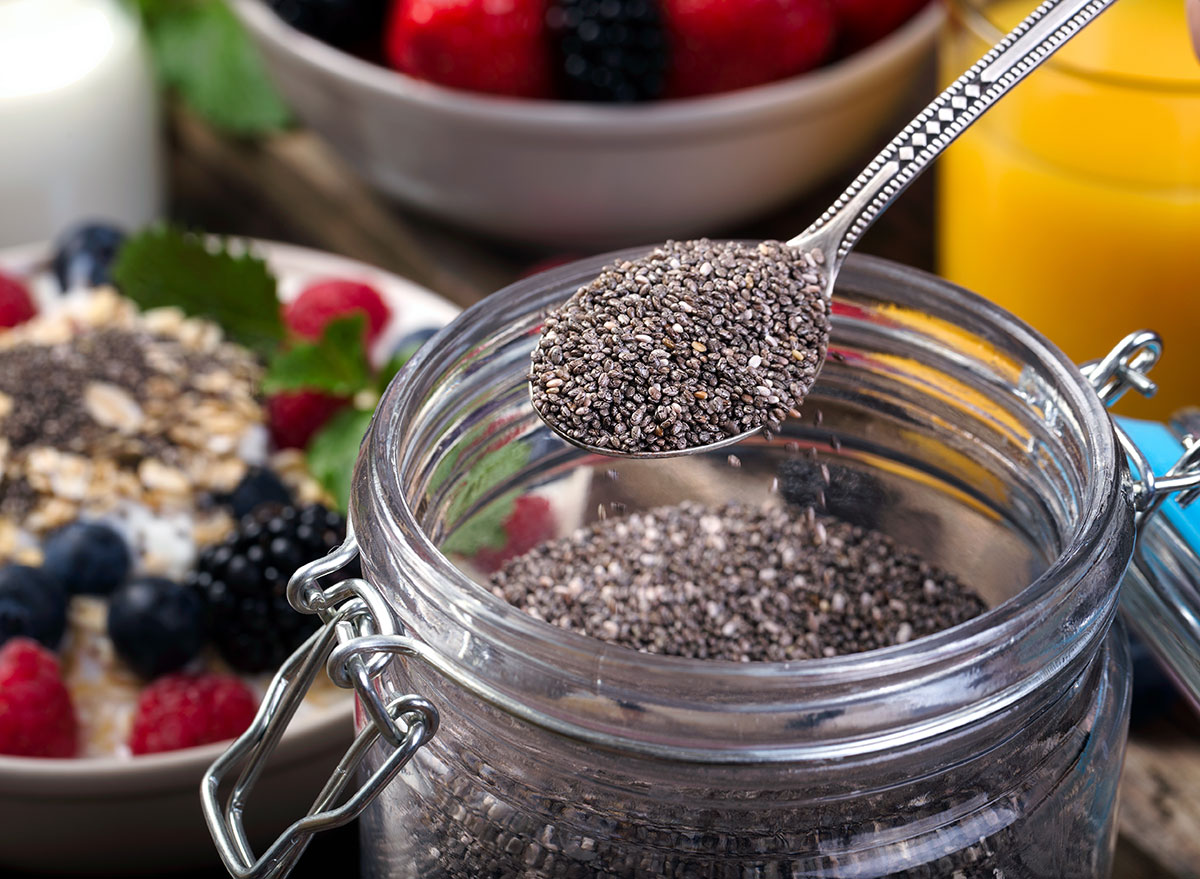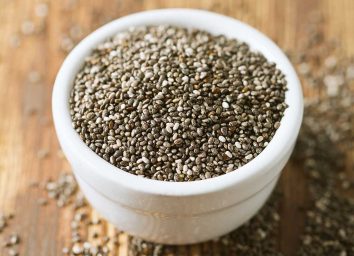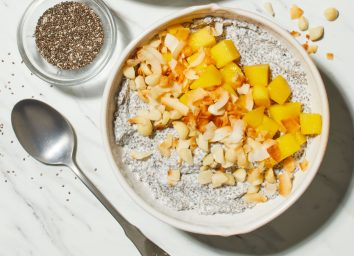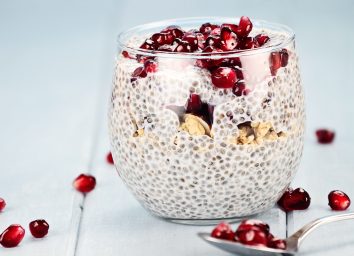One Major Side Effect of Eating Chia Seeds

Chia seeds are often referred to as a superfood as they deliver a ton of nutrients for minimal calories. While they should be enjoyed often, there's one major side effect you should be cognizant of before pouring several tablespoons of the stuff into your morning bowl of oatmeal.
If eaten in excess, chia seeds can cause various digestive problems, namely bloating.
There are a couple of reasons why this can occur. For starters, chia seeds are very high in fiber, containing about 10 grams per 2-tablespoon serving. According to the Food and Drug Administration (FDA), the daily recommended intake of fiber is 28 grams for a 2,000-calorie diet.
As tempting as it may be to knock out 36% of your daily needs of fiber on chia seeds alone, a 1-ounce serving in one sitting may not be the best move for everyone. This is especially the case if you're currently eating a low-fiber diet, which is the case for the average American, who only consumes 16 grams of fiber in an entire day.
To put it in perspective, by eating one serving of chia seeds, you would consume over 60% of your average intake of fiber in one sitting. While fiber is incredibly beneficial to your health, and you should strive to hit the recommended intake, consuming that much fiber at one meal when your body isn't used to processing that much fiber could cause digestive distress in some people.
You may experience bloating due to high levels of a specific type of fiber in chia seeds, insoluble fiber, which makes up 50% of the seed's nutritional makeup, according to an analysis published in the Research Journal of Recent Science.
This type of fiber provides retains water several times its weight, which helps to provide bulk to stool. Additionally, a Journal of Pharmacognosy and Phytochemistry review notes that the insoluble fiber in chia seeds speeds up gastrointestinal transit time as it helps to promote bowel movements. However, water must be consumed in adequate amounts for this to happen. Otherwise, you could experience bloating as the body works to pass the fiber through your digestive tract. (Related: The 7 Healthiest Foods to Eat Right Now).
Although some people may experience bloating when consuming chia seeds, once your body adapts to eating higher, adequate levels of fiber, you'll be able to reap all the incredible benefits of chia seeds. The fiber in chia seeds has been found to help you stay full for longer, can help get rid of belly fat, may regulate blood sugar levels, and can help to reduce LDL (harmful cholesterol) from being absorbed into your bloodstream.
One way to reap the benefits of chia seeds without having to deal with any gastrointestinal distress is to soak the chia seeds in water before eating them. That way, they will expand in the bowl—not your abdomen. The blog "Choosing Chia" recommends using six parts liquids per one part chia (1/4 cup chia, 1.5 cups water) for a runny consistency and four parts liquid per one part chia (1/4 cup of chia, 1 cup liquid) for a thicker consistency. The result? Chia pudding!
Bottom line: Try not to exceed 2 tablespoons of chia seeds each day, especially if your gut is ultra-sensitive or you have GI issues. Now, be sure to check out What Happens To Your Body When You Eat Seeds.
For more healthy eating news, make sure to sign up for our newsletter!








